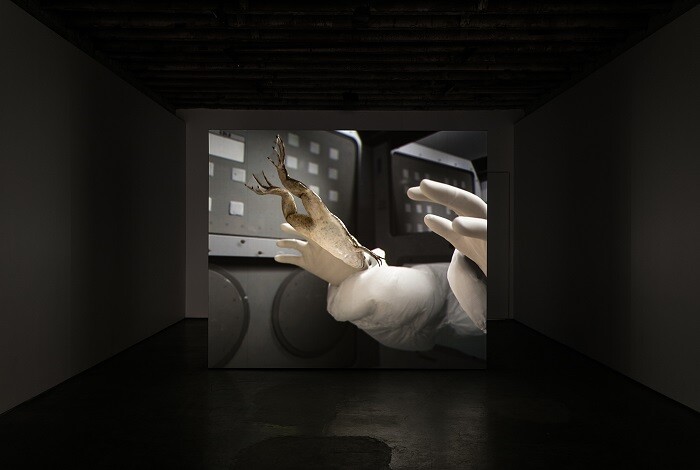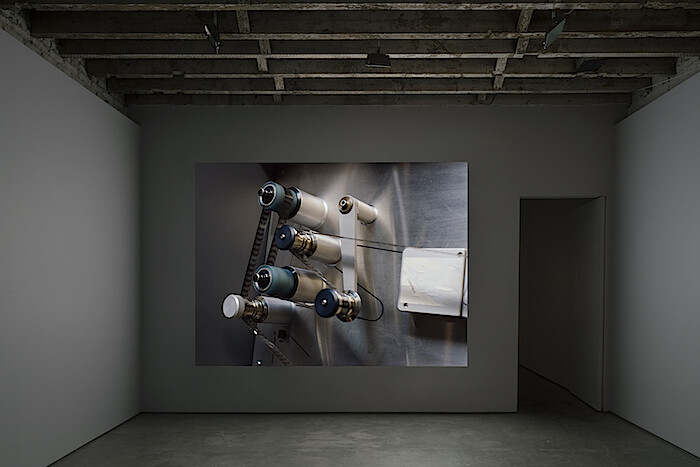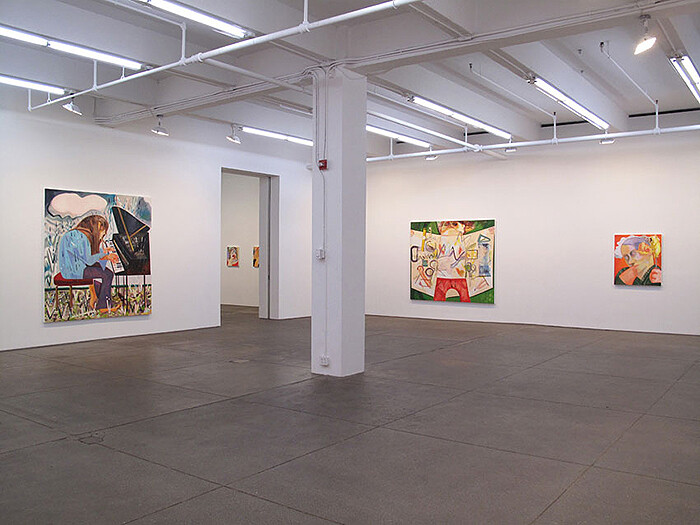Categories
Subjects
Authors
Artists
Venues
Locations
Calendar
Filter
Done
June 21, 2017 – Review
John Gerrard’s "X. laevis (Spacelab)"
Laura McLean-Ferris

Where is the bright line between life and the simulation of life? And what then are the criteria for assessing aliveness? These questions are forever reconstituted and assessed anew at life’s fringes—around automata, the dead, artificial intelligence. 2017’s prestige AI television series Westworld is only the most recent thinking-through of such questions—a narrative in which robots make a leap into sentience through the injection of a “mistake” memory gesture into their programming. In 1780 Luigi Galvani ran currents of electricity through dead frogs’ legs, the force animated the limbs so that they twitched and jumped (the term “to galvanize”—to electrify into action—is named after the scientist). The repercussions of this experiment, and the question marks it placed over animation, reanimation, and the godlike ability to give life charged through Mary Shelley’s Frankenstein (1818), the seminal horror story which drew on Galvani’s experiments to consider the implications of electricity as the force of vitality.
Such histories and philosophical problems are embedded in John Gerrard’s new simulation, X. laevis (Spacelab) (2017), on view at Simon Preston, playing on a large screen in the center of the gallery. Like several of the artist’s previous works, this is a digital animation that renders in real …
May 24, 2016 – Review
Amie Siegel’s "The Spear in the Stone"
Orit Gat

Exhibition spaces are, at times, haunted by the work they housed in the past. Walk through a museum and former installations will reverberate. Think of the Arsenale in Venice, visited by the ghosts of biennials past. This is all the more evident in galleries. The steady relationship between a gallery and an artist translates to a specific kind of knowledge by way of following, by way of making connections when seeing an artist return to a space with new work.
“Provenance,” Amie Siegel’s first exhibition at Simon Preston, in fall 2013, included a video, Provenance (also from 2013), that presented the artist’s research into the trail of value creation that occurs in auction houses. Tracking pieces of furniture created by Le Corbusier for buildings in Chandigarh, the Indian city planned by the Swiss-French architect, the work delineates the travels of tables, chairs, and settees from fancy apartments in New York and London back through their sales at auction, through auction previews, shipping crates, and finally their origin in India. Even if they are the video’s subject, these objects don’t have magical faculties, they do not carry an inherent value just by virtue of the attention paid to them; rather, value is …
May 7, 2012 – Review
New York gallery openings
Nickolas Calabrese

The hot city summer is just around the corner, the Knicks are mercurial as ever, and labor union art handlers are still out of work. New Yorkers have reason to complain. An apt occasion to gripe about the Scrooge McDucks of the art world came and went: the first New York edition of Frieze. The fair also provided galleries with the salacious opportunity to show just how garish they can really be. However, with all of the social and political opposition to opulent displays of the ultra-wealthy, it should come as no surprise that many galleries did not take that route this May. But changes in the art world are bound to occur at moments like this: call it historical inevitability. Whatever the causal factors may be, several galleries in NYC have mounted eloquent and penetrating exhibitions, and the shows represented here are laden with the spirit of a protest, each one more singular and exciting than the next.
Heavily hyped for her first outing at a new gallery is Dana Schutz’s “Piano in the Rain” at Friedrich Petzel Gallery. Schutz’s pictorial fictions are replete with her familiar brand of alterity, though in this sequence the figures seem more comprehensive than …
